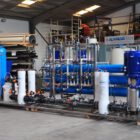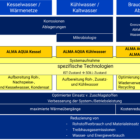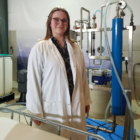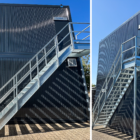Brewery waste water
Breweries not only produce beer, but also considerable quantities of wastewater. This wastewater has a complex composition, ranging from organic substances such as sugar and starch to cleaning agents and solids. Efficient treatment of this wastewater is essential in order to comply with environmental regulations, reduce operating costs and
Vapor condensate
Vapour condensates are a characteristic by-product of thermal processes, particularly in the food and beverage industry, breweries, the chemical industry and in evaporation plants. Their treatment and possible recovery are decisive steps towards conserving resources and reducing costs. Due to their composition and potential benefits, they are a key issue in the
BSB5
The biochemical oxygen demand (BOD5) is one of the most important parameters in water and wastewater technology. It indicates the amount of oxygen required by microorganisms to break down the biodegradable organic substances in a water sample within five days under standardized conditions. The BOD5 is a central parameter
Calcium carbonate
Calcium carbonate (CaCO₃) is a widely used inorganic salt that occurs naturally in the form of limestone, marble or chalk. Calcium carbonate plays a central role in industrial water treatment and wastewater treatment, both as a chemical component of water and in relation to the problem of scaling and the lime-carbonic acid balance in water.
Calcium hydroxide
Calcium hydroxide (Ca(OH)₂), also known as slaked lime or slaked lime, is an inorganic compound that plays an important role in industrial water treatment and wastewater treatment. It is formed by the reaction of calcium oxide (CaO), also known as quicklime, with water. Calcium hydroxide is a white, solid powder or a powder dissolved in water.
Carbonate precipitation
Carbonate precipitation is a chemical process for removing dissolved ions (especially heavy metals, calcium and magnesium) from water and wastewater. The ions are converted into poorly soluble carbonate compounds by the addition of carbonate ions (CO₃²-), which precipitate as solids and can then be removed by filtration or sedimentation.
Batch system
A batch system is a system for the discontinuous treatment of water or wastewater that operates in batch mode. In contrast to continuously operating systems, a batch system treats a defined quantity of water or wastewater (a batch) in a defined process. At the end of the treatment cycle, the treated
Chemical-physical treatment
Chemical-physical treatment is a method of cleaning industrial wastewater and process water in which chemical and physical processes are combined to remove pollutants from the water or render them harmless. This treatment approach is often used in industries where wastewater contains persistent, toxic or harmful substances.
Chemical-physical treatment plants
Chemical-physical treatment is a method of cleaning industrial wastewater and process water in which chemical and physical processes are combined to remove pollutants from the water or render them harmless. This treatment approach is often used in industries where wastewater contains persistent, toxic or harmful substances.








